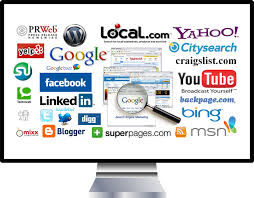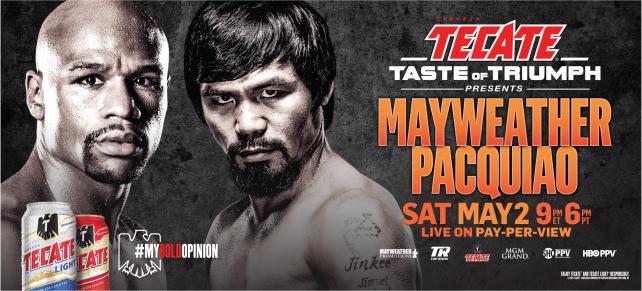
With the digital climate gaining more ground each day, Search Engine Marketing (SEM) is more important than ever when it comes to getting the most out of your business.
Online sales are taking over the marketplace as consumers are changing their shopping habits from the tradition of brick and mortar establishments to the ease and convenience that the web offers. Ken Burke from Targetmarketingmag.com gives us a look at how businesses can best use the search engines we all know and love to get consumers interested, impressed, and involved.
1. Get Indexed With the Top Three Search Engines
Make certain that all the pages on your site are fully indexed with Google, Yahoo! and MSN. Google typically handles 46 percent of all searches conducted online monthly, and on average will be your primary source of search engine traffic and orders.
You can be proactive about getting listed with Google by submitting your pages using Google Sitemaps. Also, submitting your site to the open directory dmoz.org will speed up the overall indexing process and will help Yahoo! and MSN find your site faster, as well.
2. Get Your Keywords Right for Paid Search
Develop a robust list of keywords. Re-examine this list at least quarterly to ensure you optimize the most popular terms shoppers are using. Online shoppers now use four- and five-word keyword strings to more quickly find what they’re looking for. A shopper who used to search for “red sweater” now is more likely to search on “men’s red wool pullover sweater” to focus the search and yield better results.
Create keyword combinations using your existing category and subcategory navigation, and purchase them as keywords. For example, if you run a large and diverse department store Web site, you would need to purchase broad category names such as apparel, housewares, lawn and garden, cosmetics, clearance … and whatever other primary category names make up your product line.
You also need to own each sub-category name. An apparel retailer might need words like sweaters, dresses, menswear, women’s, petites, etc.
Purchase key phrases composed of the words listed above in combination with terms that describe your products such as wool, cotton, cardigan, pullover, etc.
And don’t forget about synonyms, because everybody uses slightly different terms to find the same things. You also should consider buying your brand name and branded keywords. The price per click is likely to be low, and it will ensure that you always have top position.
3. Manage Your Copy for Natural Search
You can improve your rankings in natural search by tailoring your content for better performance. While every search engine is different, you can focus your content optimization efforts around a standard set of key variables: page title, product name, metadata, image alt descriptions and visible HTML text on the page.
Incorporate your targeted keywords and key phrases in each of these variables. However, make sure you find the right balance. Repeating your keywords too often on a given page may depress keyword ranking. Use a consistent product naming convention based on terms your customers use. Call a shoe a shoe, and not “footgear.”
Proactively managing your copy for paid search is just as important. In the sponsored search listings you submit to Google, Yahoo! and MSN, ensure you repeat the keyword in your ad title and in the body of the listing. Add a differentiator such as “10,000 items online” or “lowest prices” to the body of the listing to make your copy stand out.
4. Send Them to the Right Landing Page
When your potential buyer clicks on your search engine listing, he should land on the most relevant page as deep within your site as possible, and as close to an actual point of purchase as possible. Shoppers won’t bother to search through your site to find the specific product they want. If they want a men’s red, wool, pullover sweater and you don’t hand it to them right away, they’ll go straight back to the search engine and find a competitor who will.
Send shoppers to a page that matches the level of granularity of the search terms they use. If they use broad search terms, such as “apparel,” send them to your homepage if you are a pure-play appareler or to your apparel category page. If they search for a specific product such as a red sweater, show them a specific product or present them with a result set for red sweater from your internal site search. Give them the chance to click “buy” right away.
5. Use Natural Search and Paid Search in Tandem
Natural and paid search have a symbiotic relationship. Natural search yields results more slowly and is a long-term strategy. Results are dependent on the quality and quantity of the information you incorporate into your Web site through metatags, keywords and visible page content. Natural search optimization is more difficult to do correctly, but it’s much more flexible because it’s not keyword or search engine dependent.
Paid search yields faster results with easily trackable ROI, and is limited by budget and the number of listings you can create. Whatever you do for a paid listing is specific to only one engine.
Test the effectiveness of your keywords in paid search. See what produces strong conversions and sales and incorporate these terms into your Web site to drive natural search results.
6. Benchmark Yourself
Are your search engine results delivering acceptable conversion rates, or are your pages and products not showing up at all? Are you consistently beating the competition, or are you always in second place? Know your rankings, particularly for your most important products or categories. Find out what pages currently generate the most sales and work to get your potential customers to land there.
Study your competitors. Model your approach to first meet and then beat them. Find out what keywords and phrases they use, and decide whether you should use them as well.
7. Know Your Customers and How They Search
Study your site’s internal search feature to find out what keywords and phrases customers are using. Insert these terms into your list of keywords and into the written content on your site.
Watch what happens when your customers come to you from a search engine. Do they actually buy anything? If you get a lot of browsers from Google but they don’t buy, your search standings probably are OK, but your site is letting them down. Find out what pages generate the best conversion and which products sell best; then augment your keyword list to make those pages easier to find.
8. Play to Your Strengths
If you specialize in high-end home accessories, play it up with appropriate keywords and written copy. Choose keywords that emphasize the overall value of your offering, your selection, your knowledge of your product line and your expertise in the sector.
You also can differentiate yourself from your competitors by presenting your brand value, exceptional customer service, an easy return policy and product guarantees in your ad copy or within the search landing pages.
9. Use Comparison Shopping Sites
Consumers are using comparison shopping sites more often because they make it easy to find the best price on the products they want. Their primary advantage to the merchant is that they bring you qualified, motivated buyers. They’re also a good way to introduce your business to shoppers who might otherwise never discover you.
Their primary disadvantage is that they can create downward pressure on prices. If you can’t compete on price, you can still compete using other differentiators as mentioned above.
10. Tracking, Testing and Tuning
Tracking and measurement enable you to execute effectively on anything in this list.
Modern analytics tools let you track and measure an incredible volume of data, but this can be overwhelming. Focus on the following data first:
– conversion as determined by specific keyword, category and landing page;
– traffic, sales and conversion rates from each search engine; and
– search engine rankings.
Test your keywords, landing pages and written copy to see what works best. If your analytics application allows it, set up A/B tests for your most important products and categories. Consolidate your lead in your strongest areas, then work on improving the response in other important areas.
Fine-tune your site, your keyword list and your paid listings. Sometimes you will discover an enormous improvement by making small changes, but even incremental improvements in conversion, average number of items per order and click-through rate can lead to significant improvements in your bottom line. Use all the tools at your disposal to identify where you need a boost, and work for continual improvement.





